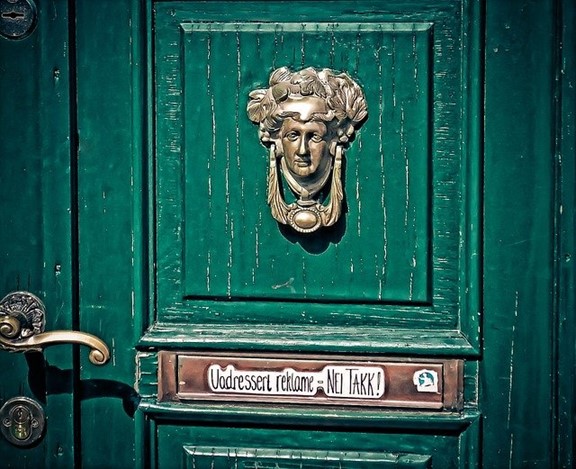All copper alloys develop a crust made of oxide and carbonate, called patina, when exposed to the air. Brass is no exception. After all, brass sheets, tubes, and bars contain about 67 percent copper, which is the primary reactant during patina formation. Fortunately, brass develops patina more slowly than copper and its other alloys, making it easier to polish.
Brass comes in over 60 different types, most of which are lustrous. You’ll know patina is already forming when brass starts losing its sheen. Then, it will turn duller and darker until the patina becomes apparent. The good news is that patina is only superficial and can diminish when scrubbed off with metal polish.
What’s in metal polish?
You may be wondering what substances there are in the metal polish that allow it to dissolve tarnish or patina. As it turns out, there’s more than a handful. The quality of commercial metal polish products may vary from brand to brand, but they all have the same mixture. These are the substances they have in common.
• Ammonia
• Silica
• Thiourea
• Denatured Alcohol
• Acids
• Petroleum Distillates and Naphtha
All of these substances are corrosive. When combined, they become the ultimate tarnish remover. But commercial metal polish is not the only product that can clean brass. Familiar products like vinegar are also excellent at cleaning metal.
What makes vinegar an excellent metal polish?
Many people use vinegar for cleaning home furniture and fixtures. They use it to disinfect wooden cupboards or give their metal frames and trims extra shine. But what makes cleaning brass with vinegar possible? Why do tough stains come off faster when soaked in vinegar than when washed with bleach? The answer lies in its chemical composition.
Vinegar is produced through fermentation. In this process, bacteria break down sugar into alcohol, the same method used for making wine. But that’s just the first level of fermentation. There’s another level in which alcohol is further catalyzed into acetic acid, the chemical that makes up vinegar. The main reason vinegar is an effective cleaning agent is that it’s an acid. And like other acids, it can corrode a wide array of substances, including patina on brass.
Things to Remember before You Clean Brass with Vinegar
While vinegar may not seem that harsh, as proven by how mild it feels when applied on the skin, don’t underestimate its ability to corrode substances on metals. It’s important to note that there are several ways to ferment organic extracts. Meaning, vinegar may also come in different types. Some are more potent than others.
Before you start rubbing your brass item with vinegar, find out how it was produced. The ideal vinegar for cleaning is the one that’s made in a lab—acetic acid mixed with water. Also known as white vinegar, this type is more potent than those produced from fruit extracts. If the vinegar seems too strong for your brass item, dilute it in water. If that doesn’t work, then consider going for a mild type like cider vinegar.
Keep in mind that vinegar dissolves not just the patina or stains on your brass surface. You may not notice it, but it can dissolve brass itself, depending on its potency. So, when you polish brass with vinegar, be careful not to scrub or buff too hard. You don’t want to damage the surface of your brass item, especially if it’s just a cladding to a different material.
How to Clean Brass with Vinegar
You can choose to clean your brass items with vinegar alone. But you can also mix it with other household products. It has been proven many times that homemade metal polish is relatively as effective as its commercial counterparts. The only difference is you will have to put some effort into making the metal polish. Here’s how to make homemade metal polish with vinegar and how to use it.
1. Prepare your vinegar and equal parts of salt and flour. You can also use corn starch or baking soda if you don’t have flour. Mix these three ingredients to form a paste. If you don’t have vinegar, pure lemon juice is a good alternative.
2. Clean your brass item thoroughly. Wash it with soap and water to remove oils and dirt that might get in the way of your homemade metal polish.
3. Make sure the surface of your brass item is parched. Moisture can reduce your metal polish’s effect.
4. When you’re ready, apply the paste on the surface of your brass item and let it sit for 10 to 20 minutes. That should be long enough for the vinegar to break down the tarnish on your item and for the salt and flour to extricate it.
5. Wipe away as much paste from the surface of your brass item as possible using a clean cloth. Then, start buffing until the metal’s untarnished surface reemerges.
Restoring your brass furniture or fixture shouldn’t be a stressful task. If you know how to make homemade metal polish, you’ll find cleaning brass with vinegar fun and productive. There’s nothing more fulfilling than to see your antique possessions come to life again.
In case you are looking to make furniture, and you want its luster to last for a long time, find trusted brass suppliers like Rotax Metals. They provide high-quality copper materials and they supply to large enterprises across North America.


